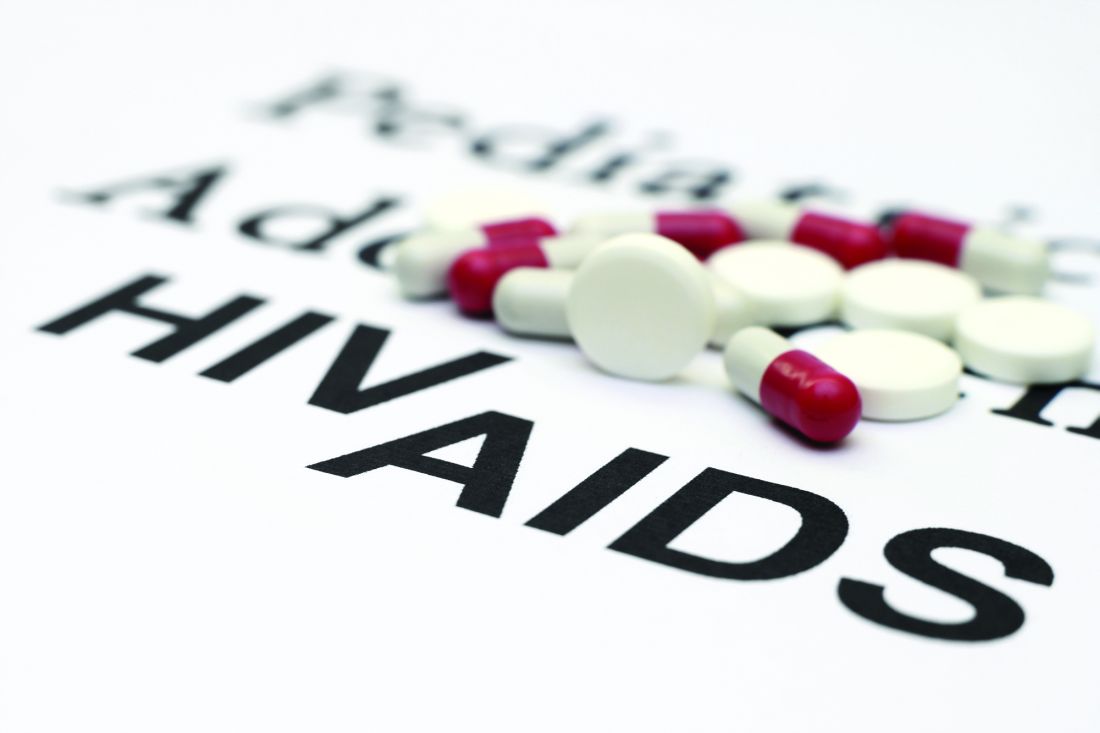User login
A great volume of HIV and AIDS research enters the medical literature every month. It’s difficult to monitor everything, so here’s a quick look at some notable news items and journal articles published over the past few weeks.
There has been a significant increase over time in the proportion of deliveries to women living with HIV aged 40 years and older, which has implications for pregnancy management, according to a study in HIV Medicine.
HIV-positive older adults have higher cystatin C levels than do HIV-negative older adults, according to a recent study, and cystatin C may be associated with neurocognitive impairment in this population, particularly if they use tenofovir.
A low Infant and Child Feeding Index, dietary diversity, and food consistency scores were likely associated with increased risk of diarrhea and acute respiratory infection among HIV-exposed infants in Tanzania, according to a study in JAIDS.
A Pediatric HIV/AIDS Cohort Study of HIV-exposed, uninfected U.S. children found growth was above average, although maternal tenofovir use was not associated with lower length or head circumference at 2 years of age, as hypothesized.
Cerebrovascular endothelial dysfunction associated with HIV infection may be most relevant for individuals with less traditional vascular risk, such as those with lower cholesterol, according to a study published in JAIDS.
Antiretroviral therapy during pregnancy was not associated with preterm birth, a recent study found, and it may in fact be protective against severe adverse outcomes accompanying extremely to very preterm birth.
A large majority of HIV-negative gay and bisexual men were appropriate candidates for PrEP, yet less than 1 in 10 were using and adherent to PrEP, according to a study in JAIDS. The findings highlight the need for interventions tailored to address the unique barriers men face at each stage of the care cascade.
Men who have sex with men remain a high risk group for HIV infection in a low prevalence setting, according to a study in Istanbul, and thus represent a key target population for diagnostic and therapeutic interventions.
A Kenya-based study found there is an urgent need to implement HIV prevention and treatment interventions targeting young people and patients entering care with severe immunosuppression (CD4 cell counts less than 100 cells/mcL), to optimize the impact of HIV prevention, care, and treatment in resource scarce settings.
A recent Nigerian study found evidence of a rising tide of HIV infection in TB patients, in particular among single middle-aged women with low education.
Negative emotional states with significant severity were common among people living with HIV, particularly depression and anxiety, according to a study in HIV & AIDS Review.
Drug-drug interactions between direct-acting antivirals and antiretroviral therapy are frequently found among HIV/HCV-coinfected patients, according to a study in HIV Medicine.
Key pretreatment viral resistant-associated variants (RAVs) for hepatitis C protease inhibitors are present in a major portion of the HCV/HIV coinfected population prior to therapy, a recent study found.
[email protected]
On Twitter @richpizzi
A great volume of HIV and AIDS research enters the medical literature every month. It’s difficult to monitor everything, so here’s a quick look at some notable news items and journal articles published over the past few weeks.
There has been a significant increase over time in the proportion of deliveries to women living with HIV aged 40 years and older, which has implications for pregnancy management, according to a study in HIV Medicine.
HIV-positive older adults have higher cystatin C levels than do HIV-negative older adults, according to a recent study, and cystatin C may be associated with neurocognitive impairment in this population, particularly if they use tenofovir.
A low Infant and Child Feeding Index, dietary diversity, and food consistency scores were likely associated with increased risk of diarrhea and acute respiratory infection among HIV-exposed infants in Tanzania, according to a study in JAIDS.
A Pediatric HIV/AIDS Cohort Study of HIV-exposed, uninfected U.S. children found growth was above average, although maternal tenofovir use was not associated with lower length or head circumference at 2 years of age, as hypothesized.
Cerebrovascular endothelial dysfunction associated with HIV infection may be most relevant for individuals with less traditional vascular risk, such as those with lower cholesterol, according to a study published in JAIDS.
Antiretroviral therapy during pregnancy was not associated with preterm birth, a recent study found, and it may in fact be protective against severe adverse outcomes accompanying extremely to very preterm birth.
A large majority of HIV-negative gay and bisexual men were appropriate candidates for PrEP, yet less than 1 in 10 were using and adherent to PrEP, according to a study in JAIDS. The findings highlight the need for interventions tailored to address the unique barriers men face at each stage of the care cascade.
Men who have sex with men remain a high risk group for HIV infection in a low prevalence setting, according to a study in Istanbul, and thus represent a key target population for diagnostic and therapeutic interventions.
A Kenya-based study found there is an urgent need to implement HIV prevention and treatment interventions targeting young people and patients entering care with severe immunosuppression (CD4 cell counts less than 100 cells/mcL), to optimize the impact of HIV prevention, care, and treatment in resource scarce settings.
A recent Nigerian study found evidence of a rising tide of HIV infection in TB patients, in particular among single middle-aged women with low education.
Negative emotional states with significant severity were common among people living with HIV, particularly depression and anxiety, according to a study in HIV & AIDS Review.
Drug-drug interactions between direct-acting antivirals and antiretroviral therapy are frequently found among HIV/HCV-coinfected patients, according to a study in HIV Medicine.
Key pretreatment viral resistant-associated variants (RAVs) for hepatitis C protease inhibitors are present in a major portion of the HCV/HIV coinfected population prior to therapy, a recent study found.
[email protected]
On Twitter @richpizzi
A great volume of HIV and AIDS research enters the medical literature every month. It’s difficult to monitor everything, so here’s a quick look at some notable news items and journal articles published over the past few weeks.
There has been a significant increase over time in the proportion of deliveries to women living with HIV aged 40 years and older, which has implications for pregnancy management, according to a study in HIV Medicine.
HIV-positive older adults have higher cystatin C levels than do HIV-negative older adults, according to a recent study, and cystatin C may be associated with neurocognitive impairment in this population, particularly if they use tenofovir.
A low Infant and Child Feeding Index, dietary diversity, and food consistency scores were likely associated with increased risk of diarrhea and acute respiratory infection among HIV-exposed infants in Tanzania, according to a study in JAIDS.
A Pediatric HIV/AIDS Cohort Study of HIV-exposed, uninfected U.S. children found growth was above average, although maternal tenofovir use was not associated with lower length or head circumference at 2 years of age, as hypothesized.
Cerebrovascular endothelial dysfunction associated with HIV infection may be most relevant for individuals with less traditional vascular risk, such as those with lower cholesterol, according to a study published in JAIDS.
Antiretroviral therapy during pregnancy was not associated with preterm birth, a recent study found, and it may in fact be protective against severe adverse outcomes accompanying extremely to very preterm birth.
A large majority of HIV-negative gay and bisexual men were appropriate candidates for PrEP, yet less than 1 in 10 were using and adherent to PrEP, according to a study in JAIDS. The findings highlight the need for interventions tailored to address the unique barriers men face at each stage of the care cascade.
Men who have sex with men remain a high risk group for HIV infection in a low prevalence setting, according to a study in Istanbul, and thus represent a key target population for diagnostic and therapeutic interventions.
A Kenya-based study found there is an urgent need to implement HIV prevention and treatment interventions targeting young people and patients entering care with severe immunosuppression (CD4 cell counts less than 100 cells/mcL), to optimize the impact of HIV prevention, care, and treatment in resource scarce settings.
A recent Nigerian study found evidence of a rising tide of HIV infection in TB patients, in particular among single middle-aged women with low education.
Negative emotional states with significant severity were common among people living with HIV, particularly depression and anxiety, according to a study in HIV & AIDS Review.
Drug-drug interactions between direct-acting antivirals and antiretroviral therapy are frequently found among HIV/HCV-coinfected patients, according to a study in HIV Medicine.
Key pretreatment viral resistant-associated variants (RAVs) for hepatitis C protease inhibitors are present in a major portion of the HCV/HIV coinfected population prior to therapy, a recent study found.
[email protected]
On Twitter @richpizzi

